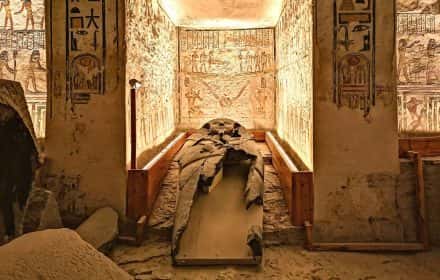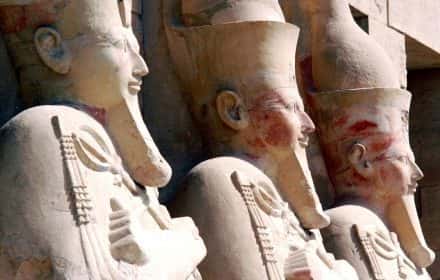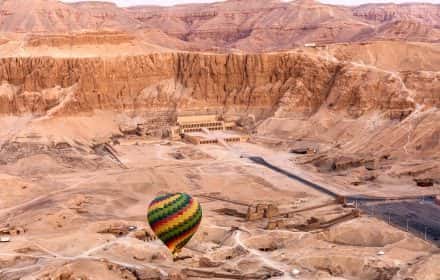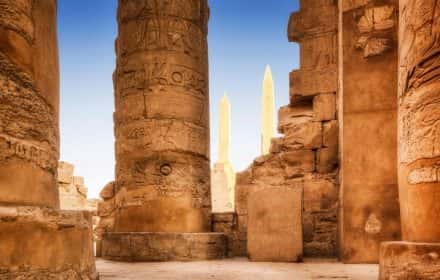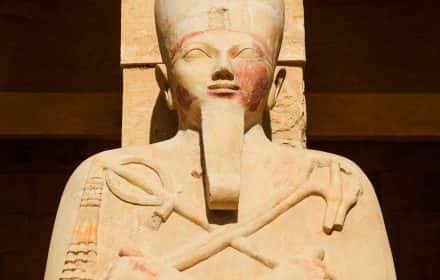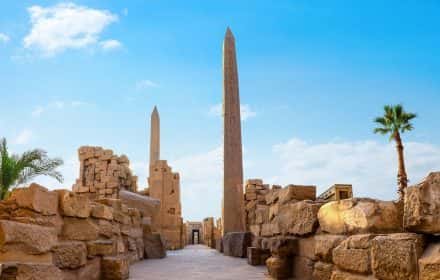This site uses affiliate links, meaning that if you make a purchase through our links, we may earn an affiliate commission.
Nestled along the serene banks of the Nile River, Luxor stands as an eternal gateway to Egypt’s remarkable past. With its awe-inspiring temples, grandiose monuments, and a palpable aura of history, this city is a true testament to the marvels of ancient civilization.
Yet, as captivating as Luxor itself may be, the surrounding region holds a trove of hidden gems that await the eager traveler seeking the best do-it-yourself day trips from Luxor.
In this hands-on exploration-driven blog post, we embark on a journey beyond Luxor’s iconic landmarks, delving into the enchanting world that lies just a DIY day trip away.
Venturing beyond the city limits, you will discover a mosaic of experiences that range from archaeological wonders to natural marvels, all easily accessible and achievable on your own. Whether you are an intrepid explorer, a history enthusiast, or simply seeking a change of pace, these carefully selected DIY day trips promise to elevate your Luxor experience to new heights.
So, without further ado, let’s set forth on an expedition of discovery, charting the best DIY day trips from the majestic city of Luxor.
How to Do-It-Yourself and Explore the Best Day Trips from Luxor
When it comes to uncovering the treasures that lie beyond Luxor’s city limits, having a well-thought-out plan for transportation can greatly enhance your experience.
In this section, we will delve into the various options available for reaching these captivating destinations and offer insight into the optimal choice based on our experience.
- With a Private Guide and a Driver
Embarking on your day trips with a private guide and driver can provide you with unparalleled convenience and customization. This approach allows you to set your own pace, dedicating as much time as you desire to each attraction.
Moreover, the presence of a knowledgeable guide enriches your journey with historical insights and local anecdotes, turning every moment into a learning experience.
- On a Tour
Opting for a guided group tour offers a budget-friendly alternative to exploring these day trip destinations. While it may offer less flexibility compared to a private arrangement, it provides an opportunity to share the experience with fellow travelers and benefit from a guide’s expertise.
- By Taxi
For those seeking a middle ground between the exclusivity of a private arrangement and the cost-effectiveness of a group tour, hiring a taxi can be a viable choice.
This method allows you to chart your course while remaining open to engaging local guides upon arrival at each site.
Choosing the right mode of transportation sets the tone for your day trips, ensuring that your time is spent in the most rewarding and enriching manner. With a guide and driver, you will find yourself immersed in the tales of Luxor’s past, seamlessly navigating its marvels while crafting memories that will stay with you long after your journey concludes.
So, with your travel strategy in mind, let’s embark on our exploration of the best do-it-yourself day trips from Luxor.
5 Best Day Trips from Luxor
Day Trip from Luxor to Temple of Khnum at Esna
Esna, located about 60 kilometers south of Luxor, was known as “Iunyt” in ancient times.
The town holds the remarkable Temple of Khnum, dedicated to the ram-headed creator god Khnum. The temple’s construction dates back to the Ptolemaic and Roman periods, with different rulers contributing to its design and expansion.
Image Source: Map data ©2020 ORION-ME
The Temple of Khnum at Esna played a crucial role in honoring Khnum’s role as a creator deity, who was believed to have created humankind on a potter’s wheel from clay.
For centuries, the temple had been an integral part of the town of Esna, serving as a center of worship and cultural activity during the time of ancient Egypt.
However, as the centuries passed, the town itself expanded and evolved. New buildings were constructed, streets were laid, and layers of urban development accumulated over time. This gradual growth and expansion eventually led to the temple becoming buried beneath the layers of construction and debris.
As the town grew, the once-prominent temple gradually receded from public awareness. The memory of the temple’s existence faded, and its physical presence became obscured. It was not until the 19th century that the temple’s rediscovery took place.
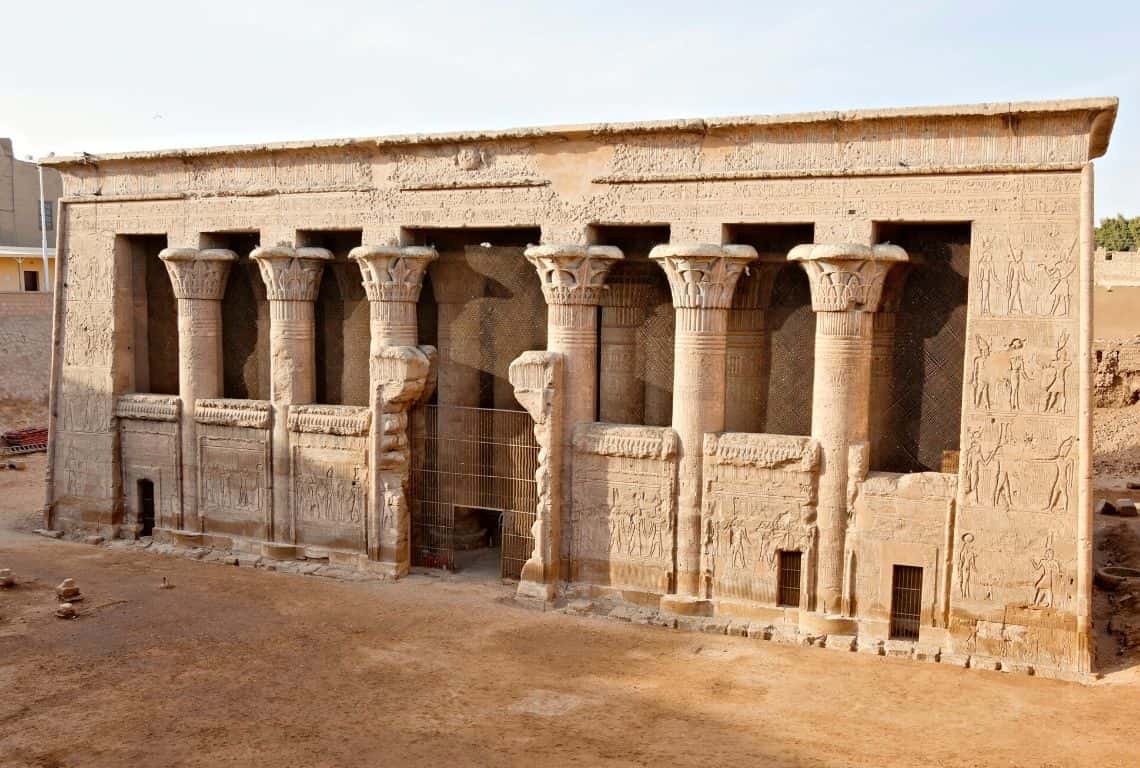
Best Do-It-Yourself Day Trips from Luxor / Temple of Khnum at Esna
In the mid-19th century, during an archaeological expedition in Esna, the remains of the buried temple were uncovered.
Excavations were undertaken to reveal the hidden treasures that lay beneath the layers of urban development. These efforts involved painstakingly removing the accumulated debris and uncovering the temple’s architectural features, inscriptions, and artwork.
The process of excavation and restoration aimed not only to reveal the temple’s original beauty but also to understand its historical and cultural significance.
The restoration efforts were carried out over subsequent years and decades, involving collaboration between archaeologists, historians, architects, and preservation experts.
Today, the Temple of Khnum at Esna stands as a testament to the dedication and skill of those who worked to bring its splendor back to light.
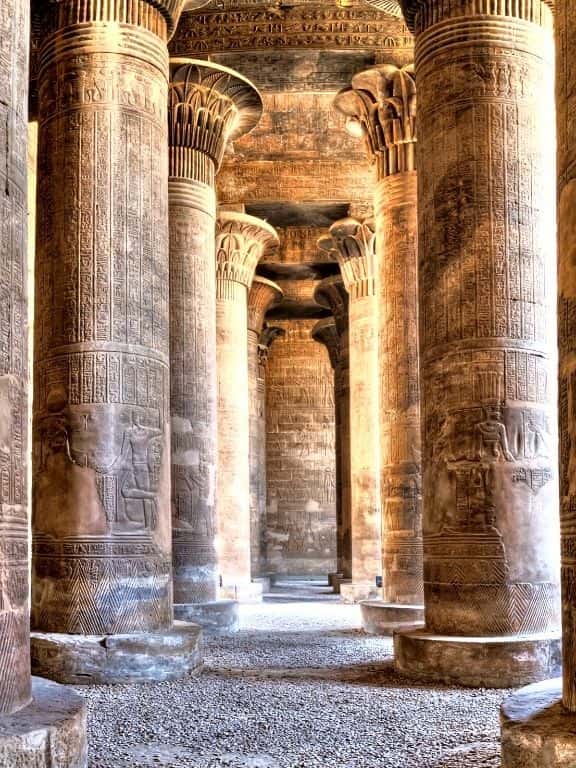
Best Do-It-Yourself Day Trips from Luxor / Hypostyle Hall at the Temple of Khnum at Esna
Once you reach the temple, make sure to take a good look at the front wall of the Hypostyle Hall. It has 6 columns joined by screening walls with beautiful reliefs.
Next, continue and step inside the Hypostyle Hall. You will be amazed by how stunning it is.
The Hypostyle Hall consists of 24 impressive columns arranged in six rows. The lotus leaf capitals of the columns are elaborate and exquisitely decorated. In addition, if you look closely, you will notice that they all have different decorations.
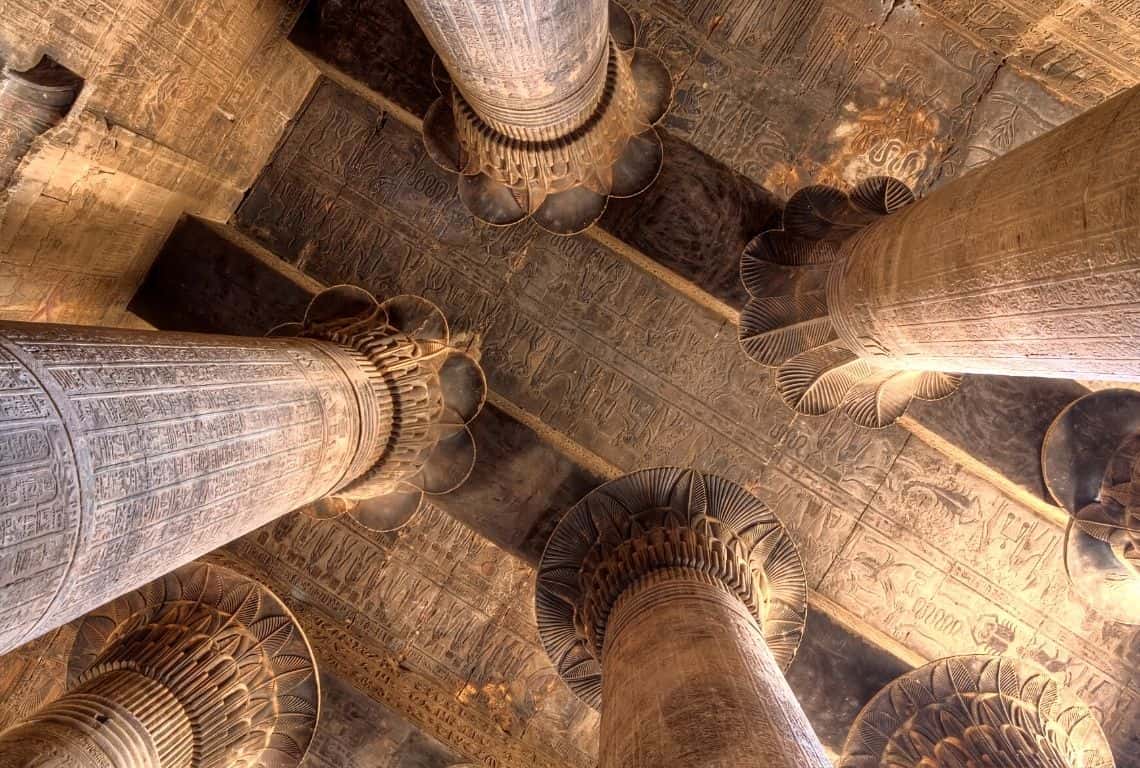
Best Do-It-Yourself Day Trips from Luxor / Hypostyle Hall at theTemple of Khnum
The sidewalls of the Hypostyle Hall are finely decorated as well. You can see the reliefs showing Roman emperors wearing traditional Egyptian clothing and performing religious ceremonies.
The back wall of the Hypostyle Hall has reliefs depicting the god Khnum.
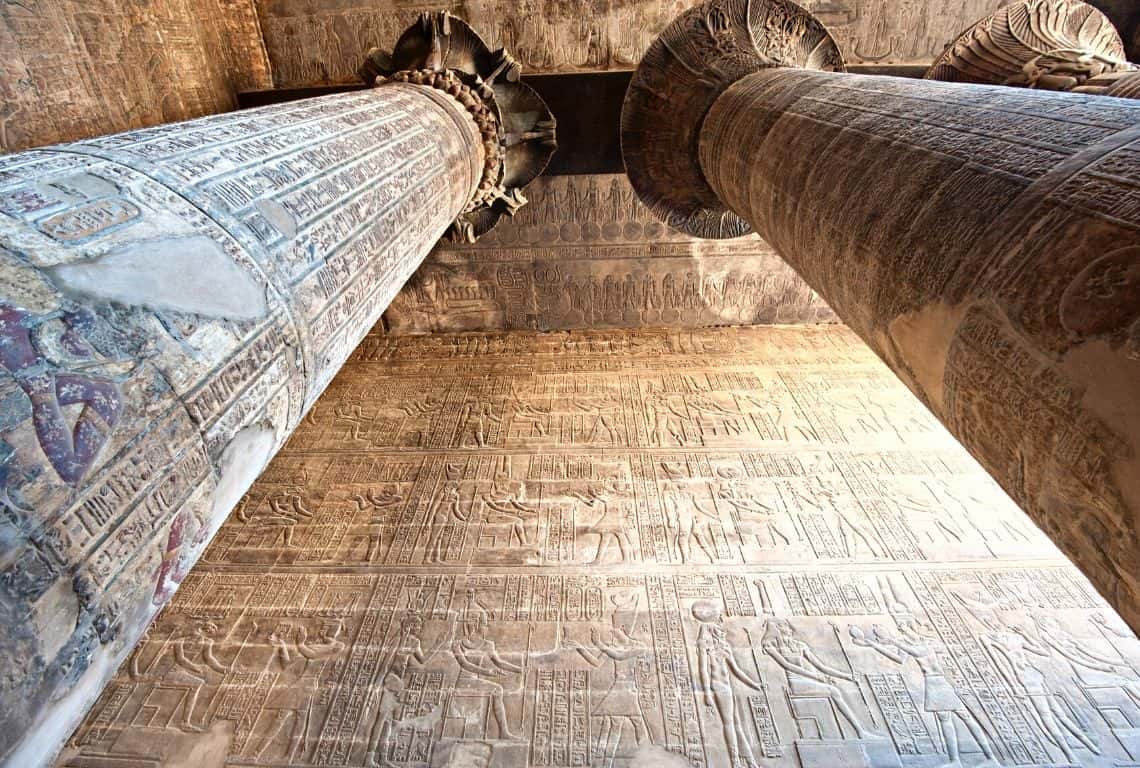
Best Do-It-Yourself Day Trips from Luxor / Hypostyle Hall at theTemple of Khnum
The temple’s inscriptions are not limited to hieroglyphics. You will be able to find inscriptions in both Greek and Latin, a testament to the temple’s use during the Ptolemaic and Roman periods when Egypt was under the influence of Hellenistic culture.
One of the most famous features of the temple is the Zodiac ceiling located in the hypostyle hall. The ceiling depicts a circular representation of the zodiac signs along with Egyptian deities. This astronomical feature is a rare example of ancient astrological art.
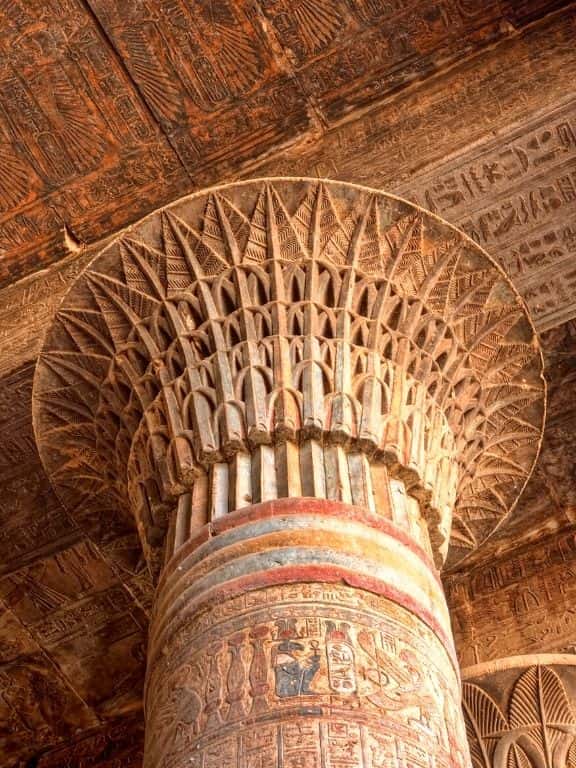
Best Do-It-Yourself Day Trips from Luxor / Hypostyle Hall at the Temple of Khnum at Esna
Day Trip from Luxor to the Temple of Horus at Edfu
Nestled along the tranquil banks of the Nile, the town of Edfu holds a treasure of the ancient world—the awe-inspiring Temple of Horus. This grand temple stands as a testament to the enduring devotion of the ancient Egyptians to their gods and their remarkable architectural prowess.
The Temple of Horus at Edfu is located 109 km south of Luxor. It roughly takes 2 hours and 15 minutes to reach the city of Edfu.
Image Source: Map data ©2020 ORION-ME
As my guide told me, the Temple of Horus at Edfu was built during the Ptolemaic Period. Specifically, it was started in 237 BC by Ptolemy III Euergetes and finished some 180 years later, around 57 BC by Ptolemy XII Auletes. The temple was dedicated to the falcon-headed god Horus.
Once you get to the temple, take your time and notice the entrance to the temple. It is composed of an impressive Pylon.
The front of the Pylon is decorated with reliefs of Pharaoh Ptolemy XII defeating his enemies.
Next, cross the Pylon and turn around. The back of the Pylon has some amazing reliefs depicting the Happy Reunion Feast. This annual festival celebrated the union of Horus and his consort, Hathor. The vivid reliefs capture the jubilation and sacred rituals that were central to ancient Egyptian culture.
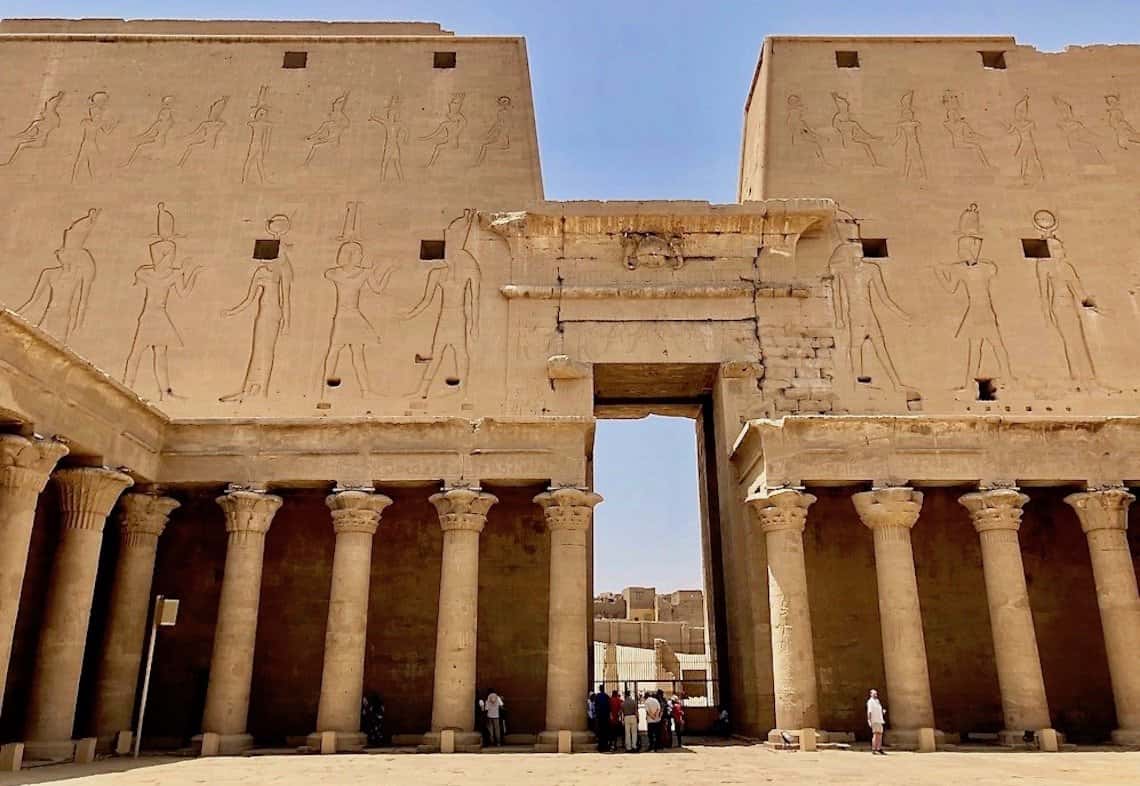
Do-It-Yourself Day Trips from Luxor / The Temple of Horus at Edfu
And, then, take your time and enjoy the magnificent Courtyard surrounded by columns with open papyrus capitals.
Next, continue to the majestic Outer Hypostyle Hall made up of twelve columns in two rows.
Furthermore, beyond the Outer Hypostyle Hall lies the second, smaller, yet even more impressive, the Inner Hypostyle Hall. It has twelve columns which are lined up in three rows.
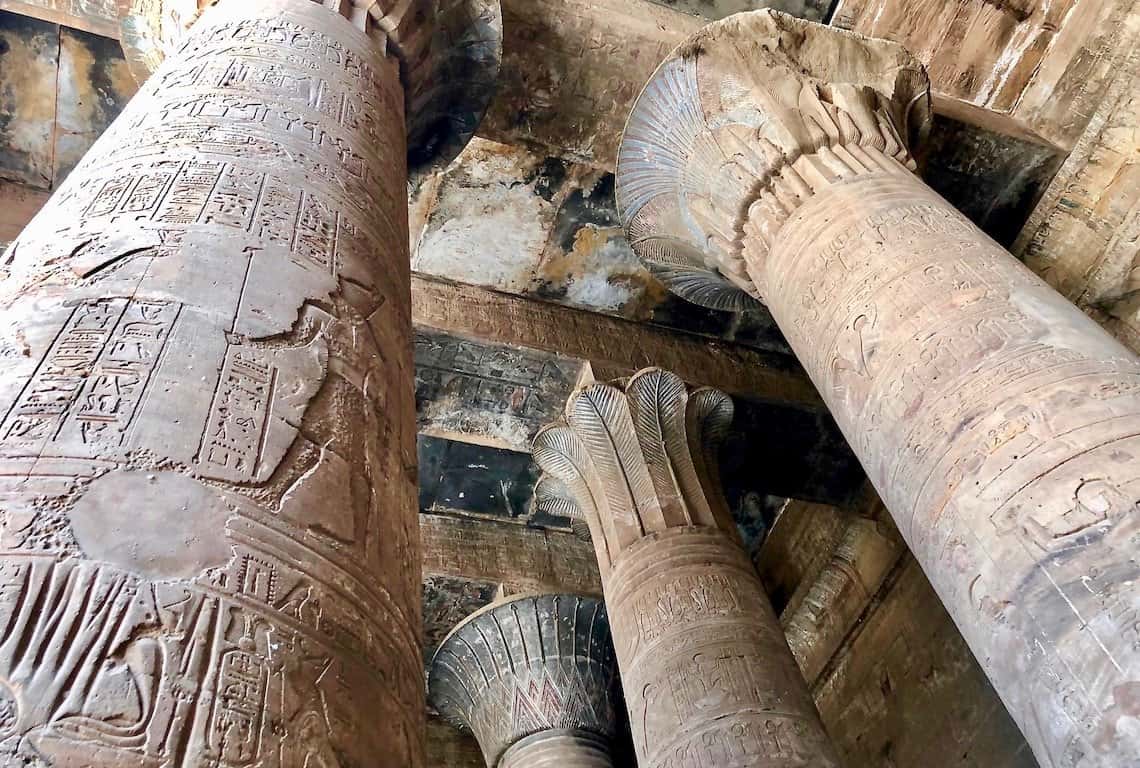
Do-It-Yourself Day Trips from Luxor / The Temple of Horus at Edfu (Inner Hypostyle Hall)
Eventually, you will reach the centerpiece of the temple, the sacred barque shrine, Naos, where the ceremonial boat of Horus was housed. It is the oldest part of the Temple of Horus at Edfu. It was built by Nectanebo II.
This shrine symbolized the god’s journey and his connection to the heavens. Another striking feature is the offerings hall, where priests conducted rituals to sustain the god’s divine presence.
Today, you can still see a black monolithic block engraved with the cartouche of Nectanebo II.
As my guide told me, the shrine contained the sacred barks of Horus and Hathor which were used in processions. As well as, the statue of Horus.
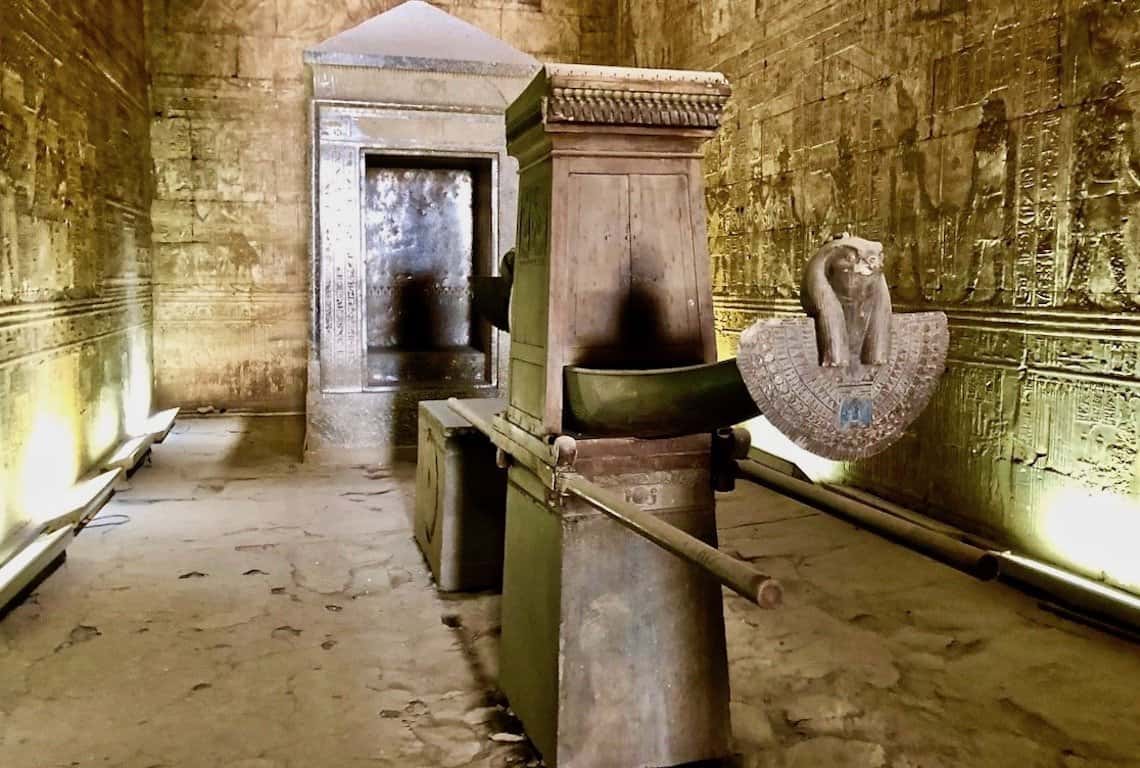
Do-It-Yourself Day Trips from Luxor / The Temple of Horus at Edfu (The Naos)
Day Trip from Luxor to the Temple of Kom Ombo
The Temple of Kom Ombo is a remarkable temple, unlike any other in Egypt. It stands as a tribute to duality, dedicated to two distinct deities: Sobek, the crocodile-headed god, and Horus the Elder, the falcon-headed sky god.
The temple is located 166 km south of Luxor. It takes about 3 hours and 30 minutes to reach the temple grounds.
It is one of the longer day trips from Luxor, but it is so worth the extra time required to get there!
Image Source: Map data ©2020 Mapa GISrael, ORION-ME
I was lucky to visit the Temple of Kom Ombo right before sunrise, and I have to say, that it was an absolutely amazing experience!
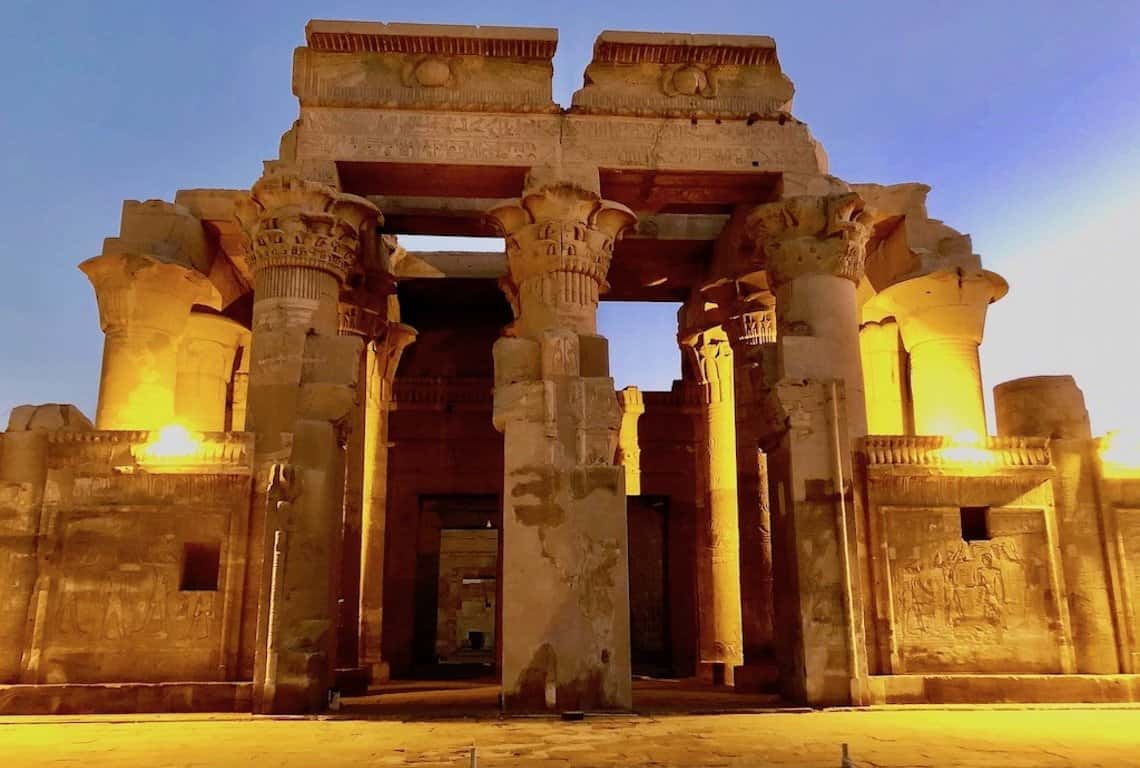
Best Do-It-Yourself Day Trips from Luxor / The Temple of Kom Ombo at Sunrise
Interestingly, the Temple of Kom Ombo is a double temple dedicated to two triads of deities.
The eastern half of the temple is devoted to the triad consisting of the crocodile god Sobek – god of the Nile and creator of the world, his wife Hathor, and their son Khonsu.
The western side of the temple is assigned to a second group consisting of the falcon god Haroeris (Horus the Elder) – god of the sky and protector of the king, his wife Tasenetnofret, and their child Panebtawy
The temple was constructed during the Ptolemaic Period – 108 to 47 BC. However, the recent excavation revealed information that the temple dates back to the New Kingdom.
For me, the most impressive sections of the Temple of Kom Ombo were the Courtyard and the Hypostyle Hall.
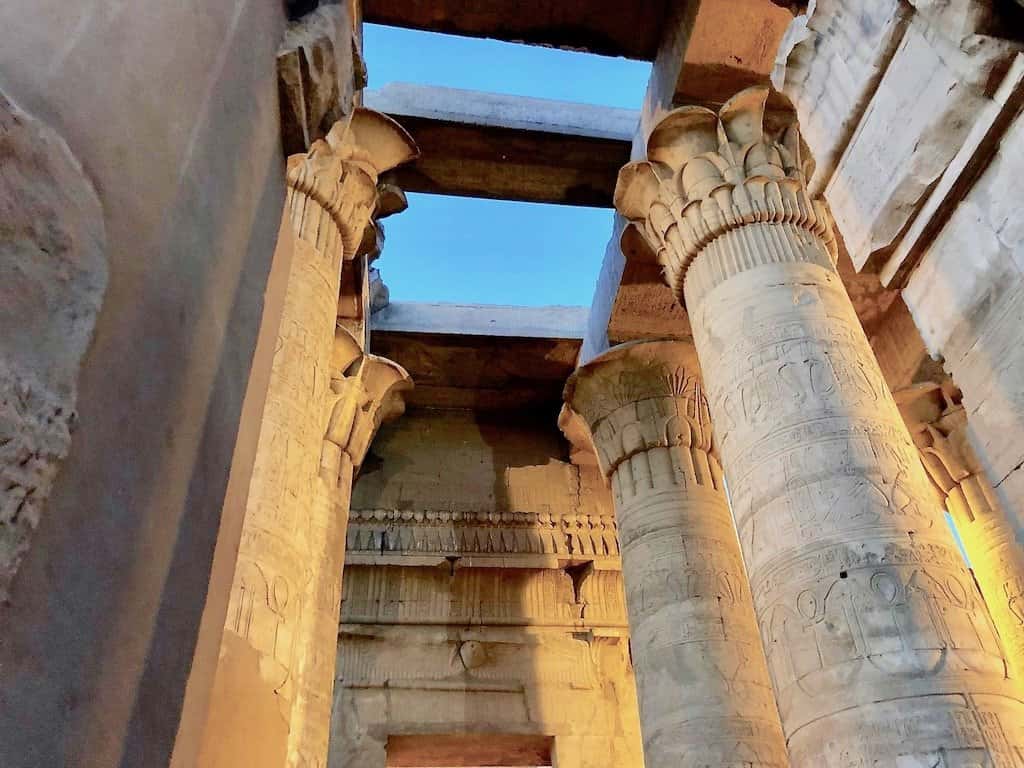
Best Do-It-Yourself Day Trips from Luxor / The Temple of Kom Ombo
Next, make sure not to miss the reliefs of the ancient Egyptian calendar. The reliefs are located on the inner section of the outer enclosure wall.
The calendar represents a yearly schedule of events specifically related to the Temple of Kom Ombo. It acted as an agenda for priests and priestesses at the temple. It helped to schedule and organize the services and rituals.
My guide showed me how to decipher the hieroglyphs of the calendar. Needless to say, I was absolutely thrilled to be able to understand how the calendar worked. By the way, check out my post and learn to read the hieroglyphs as well.
Another fascinating relief that you should not miss at the Temple of Kom Ombo is the one depicting the medical and surgical instruments used in ancient Egypt. You will be able to clearly see forceps, medicine bottles, prescriptions, curettes, weighing scales, cupping glasses, and many others. So make sure to read my post and find out more details.
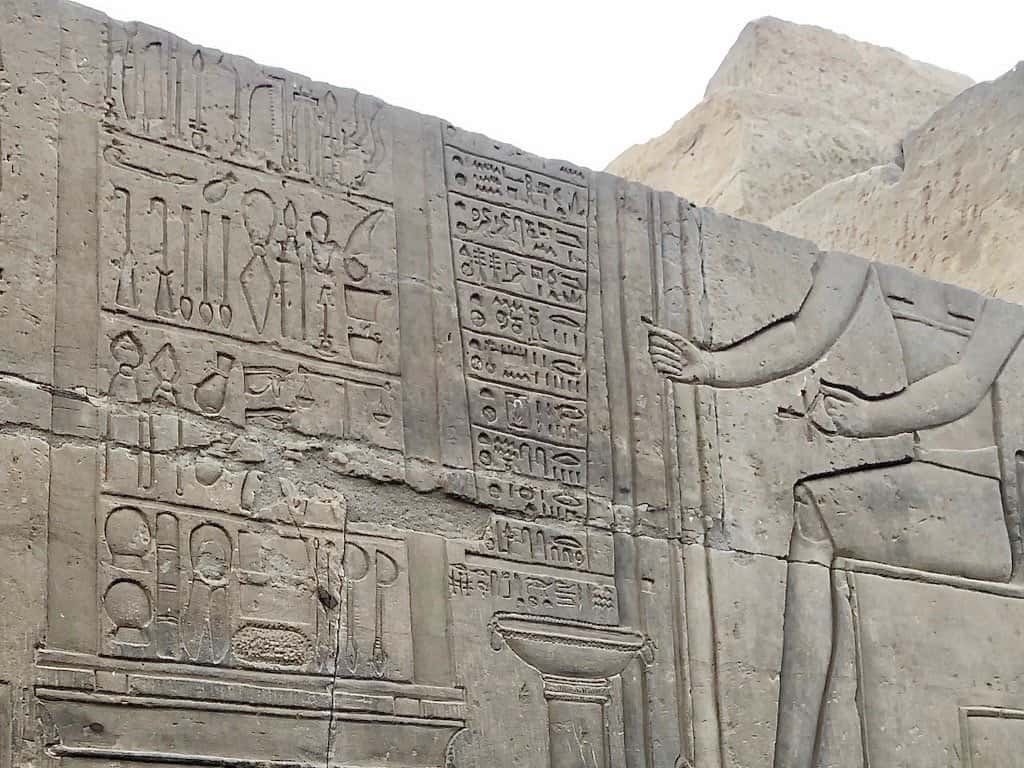
Best Do-It-Yourself Day Trips from Luxor / The Temple of Kom Ombo (Reliefs of Medical and Surgical Instruments)
I have to honestly say, that the Temple at Kom Ombo should not be missed. Hands down, it is breathtaking! Also, there is so much that you can learn about ancient Egyptian civilization by visiting the temple!
Finally, right next to the Temple of Kom Ombo is a Crocodile Mummy Museum that you should not miss. The museum is fascinating! Do not miss it!
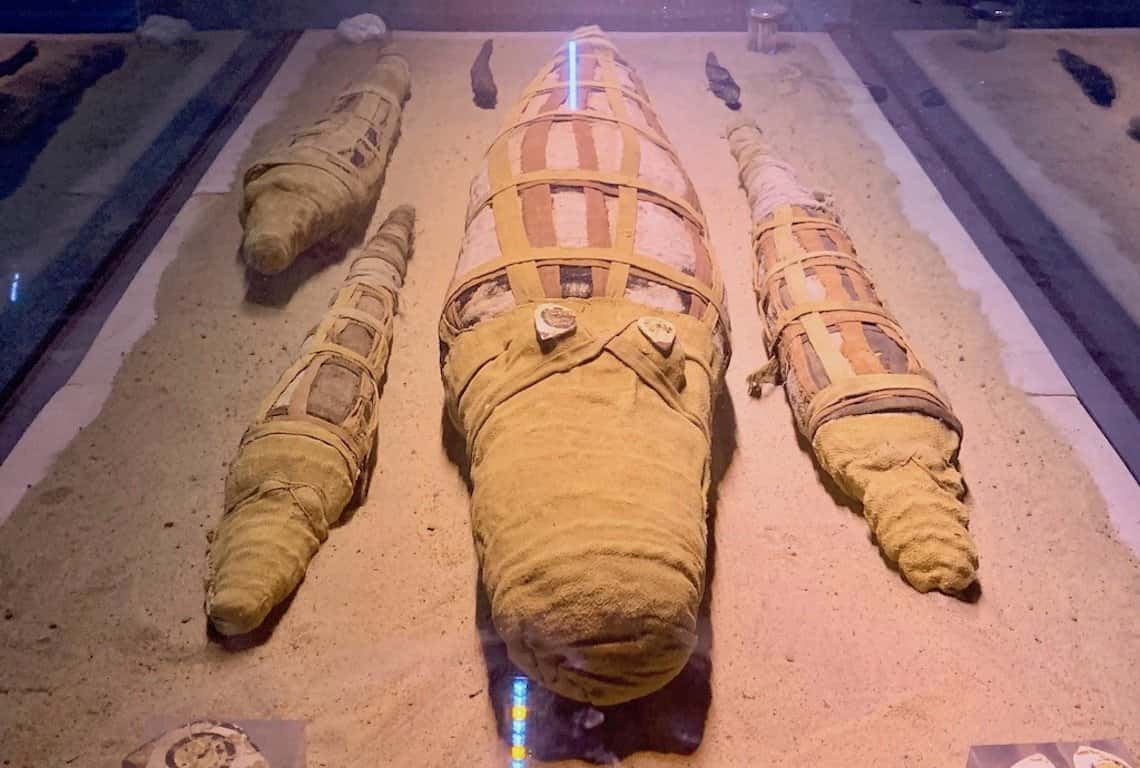
Best Do-It-Yourself Day Trips from Luxor / Crocodile Mummy Museum in Kom Ombo
Day Trip from Luxor to the Temple of Hathor at Dendera
A Luxor day trip to the Temple of Hathor at Dendera unveils a mesmerizing journey through ancient Egyptian cosmology and architecture. This temple, dedicated to the goddess Hathor, stands as a celestial ode to love, music, joy, and the heavens.
The Temple of Hathor at Dendera is located 78 km north of Luxor. It takes about 1 hour and 30 minutes to reach the temple traveling from Luxor.
Image Credit: Map data ©2020 Mapa GISrael, ORION-ME
The Temple of Hathor at Dendera is a timeless marvel, constructed during the Ptolemaic and Roman periods. It is a testament to Hathor’s prominence—a goddess associated with love, music, beauty, and maternity. As the deity of joy and feminine power, Hathor held a significant place in the hearts of the ancient Egyptians.
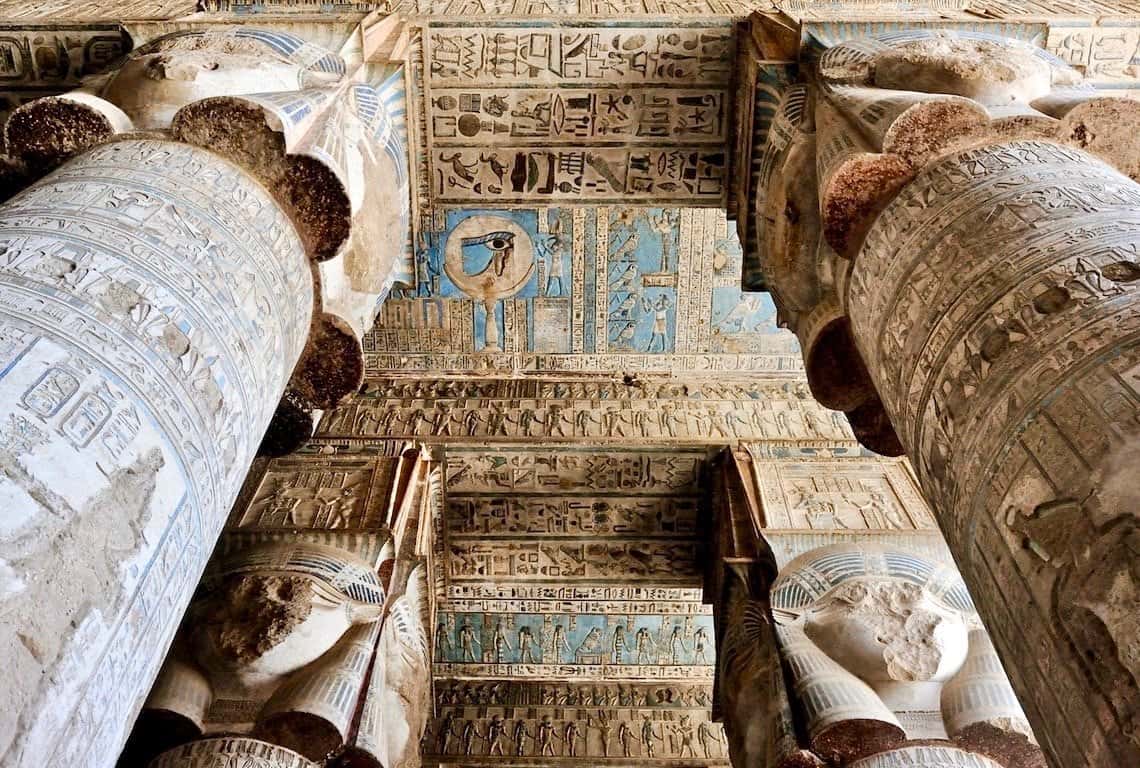
Best Do-It-Yourself Day Trips from Luxor / The Temple of Hathor at Dendera
The temple’s architecture is awe-inspiring. Intricate reliefs and hieroglyphics adorn the walls, portraying offerings to the gods, ritual scenes, and the goddess Hathor herself.
The Hathor-headed columns in the Hypostyle Hall are iconic, each featuring Hathor’s face crowned with cow ears and a solar disc—a symbol of her nurturing and protective qualities.
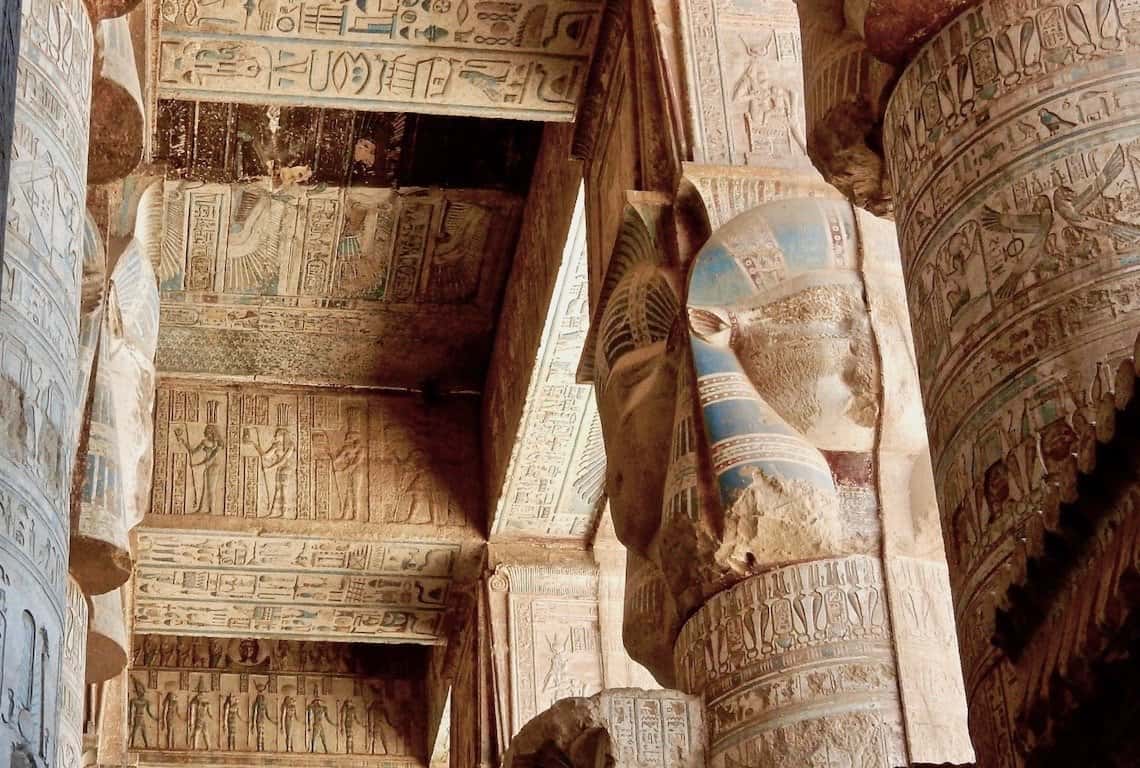
Best Do-It-Yourself Day Trips from Luxor / The Temple of Hathor at Dendera
One of the temple’s most captivating features is its celestial ceiling—a masterpiece of intricate astronomical depictions. The zodiac, constellations, and mythological figures painted on the ceiling carry a profound connection to the cosmos.
This cosmic map is a testament to the ancient Egyptians’ keen understanding of the heavens and their spiritual significance.
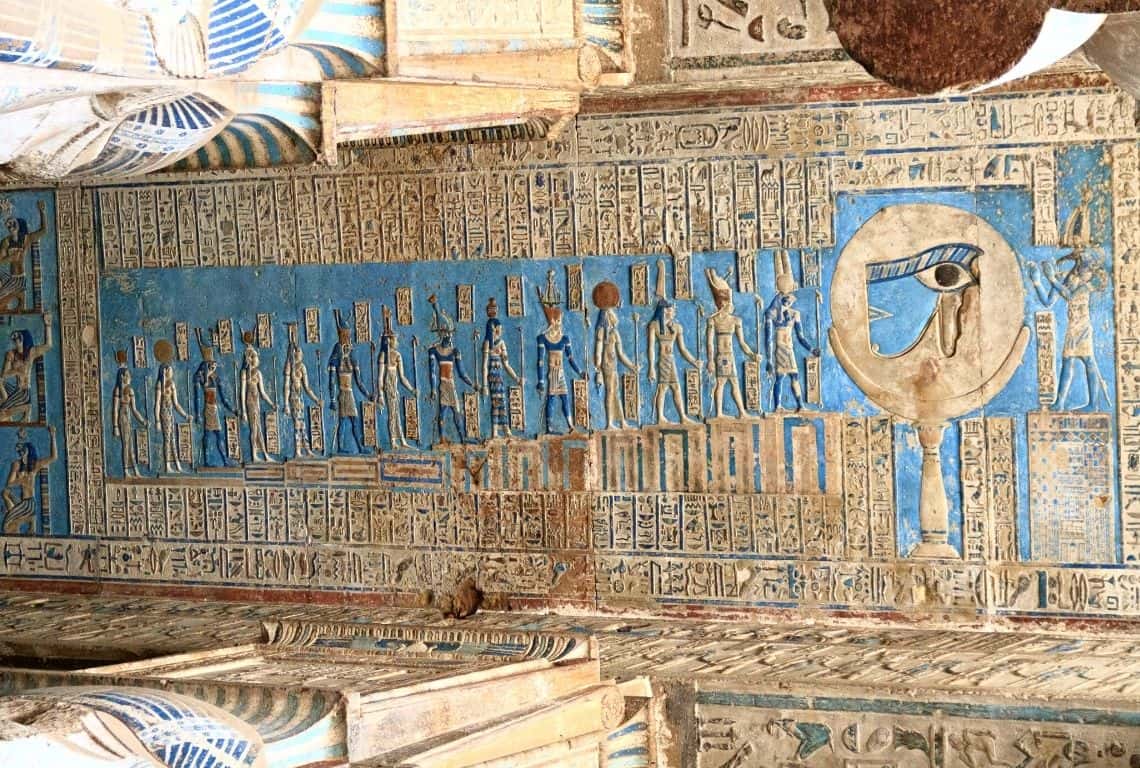
Best Do-It-Yourself Day Trips from Luxor / The Temple of Hathor at Dendera
This intricate artwork that covers the ceiling of the temple’s hypostyle hall is considered one of the most well-preserved and captivating astronomical depictions in ancient Egyptian temples!
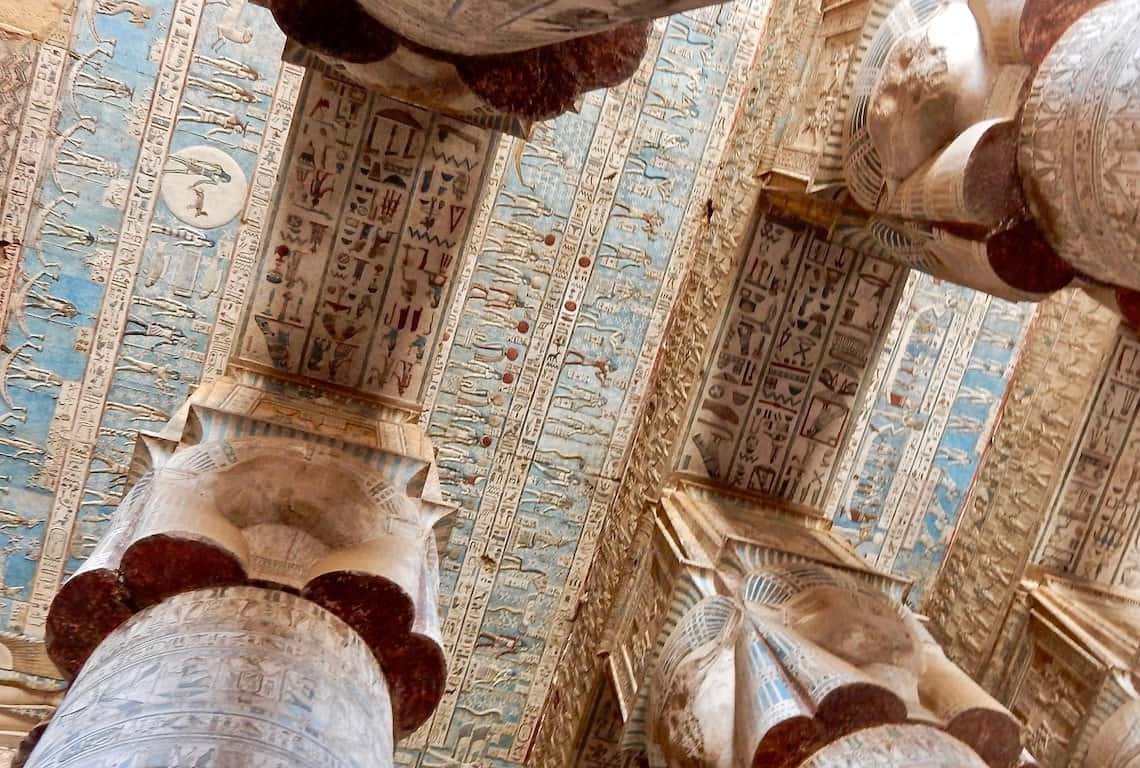
Best Do-It-Yourself Day Trips from Luxor / The Temple of Hathor at Dendera
The one relief that really captured my attention depicted the image of the sky goddess Nut swallowing the sun.
Nut, often portrayed as a woman arching over the earth, is the personification of the sky itself. She is considered the mother of the gods and plays a vital role in the Egyptian creation myth. Her body forms the vault of the heavens, with her fingers and toes touching the horizon in all directions. This positioning creates the sacred space where the sun, moon, stars, and planets traverse.
One of the most iconic aspects of Nut’s mythology is her role in the daily cycle of the sun. In the evening, as the sun sets below the horizon, Nut is depicted as swallowing the sun disk, symbolizing the sun’s journey through her body during the night. This swallowing is often portrayed as a protective gesture, as Nut encircles the sun with her outstretched arms.
At dawn, the sun is “reborn” as Nut gives birth to it once again, emerging from her body to begin its journey across the sky. This cyclical event symbolizes the concept of death and rebirth, the eternal cycle of nature, and the continuation of life even after darkness.
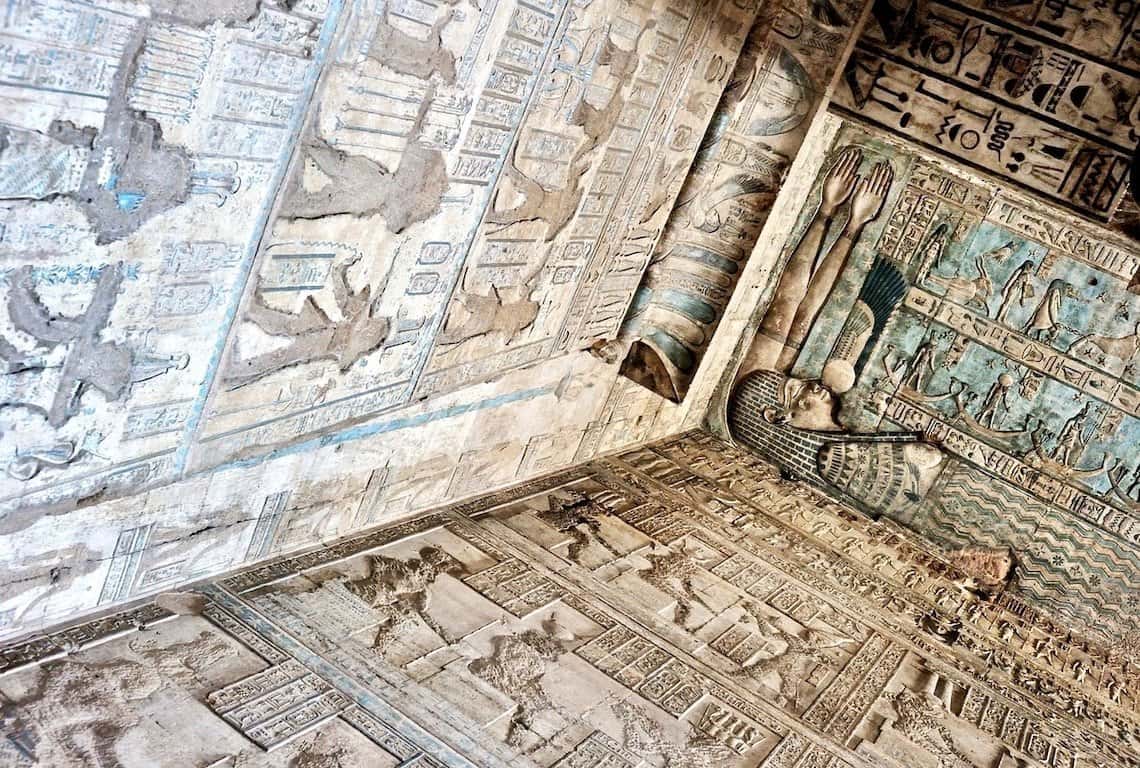
Best Do-It-Yourself Day Trips from Luxor / The Temple of Hathor at Dendera
Finally, make sure to stop by the Chapel of Osiris and take a look at the ceiling of the chapel. It has a relief of a famous disk called the Zodiac of Dandera.
The Dendera Zodiac is a circular bas-relief that spans a significant portion of the temple’s ceiling. It features a depiction of the night sky, complete with constellations, stars, planets, and mythological figures. The zodiac’s intricate design showcases the advanced artistic and scientific capabilities of ancient Egyptian craftsmen.
The zodiac also features a variety of mythological figures, including Horus, Isis, Osiris, and the four sons of Horus. These figures are often connected to the constellations and serve as a bridge between the divine and the astronomical.
The Dendera Zodiac has been interpreted as a tool for understanding the annual agricultural cycle and predicting the flooding of the Nile. Some scholars suggest that the positions of certain constellations on the zodiac corresponded to specific times of the year, assisting in agricultural planning and the timing of rituals.
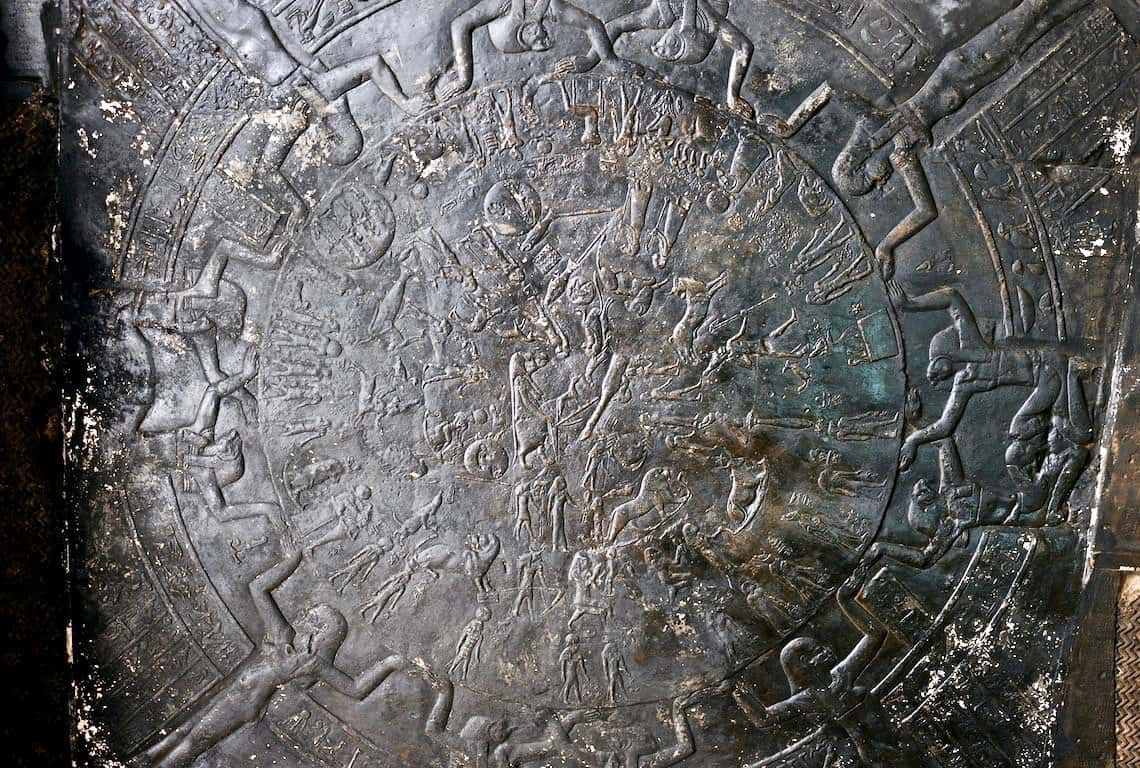
Best Do-It-Yourself Day Trips from Luxor / The Temple of Hathor at Dendera
Day Trip from Luxor to Temple of Abydos
A day trip from Luxor to the Temple of Abydos offers a profound journey into the heart of ancient Egyptian spirituality. This revered temple, dedicated to the god Osiris, stands as a testament to the enduring reverence and devotion that the ancient Egyptians held for their deities and the afterlife.
The Temples of Abydos are situated 174 miles north of Luxor. It takes about 2 hours and 30 minutes to reach the temple complex.
Image credit: Map data ©2020 ORION-ME
Abydos, with its rich historical heritage, has been a sacred pilgrimage site for millennia.
The Temple of Abydos holds deep significance as a place of veneration for Osiris, the god of the afterlife and rebirth. It is believed that this temple marks the spot where Osiris was buried, making it a destination for both religious rituals and archaeological exploration.
Once, at least ten temples were part of the Temple of Abydos Complex. Today, only three of these temples remain. They include the Temple of Seti I, the Great Osiris Temple, and the Temple of Ramses II.
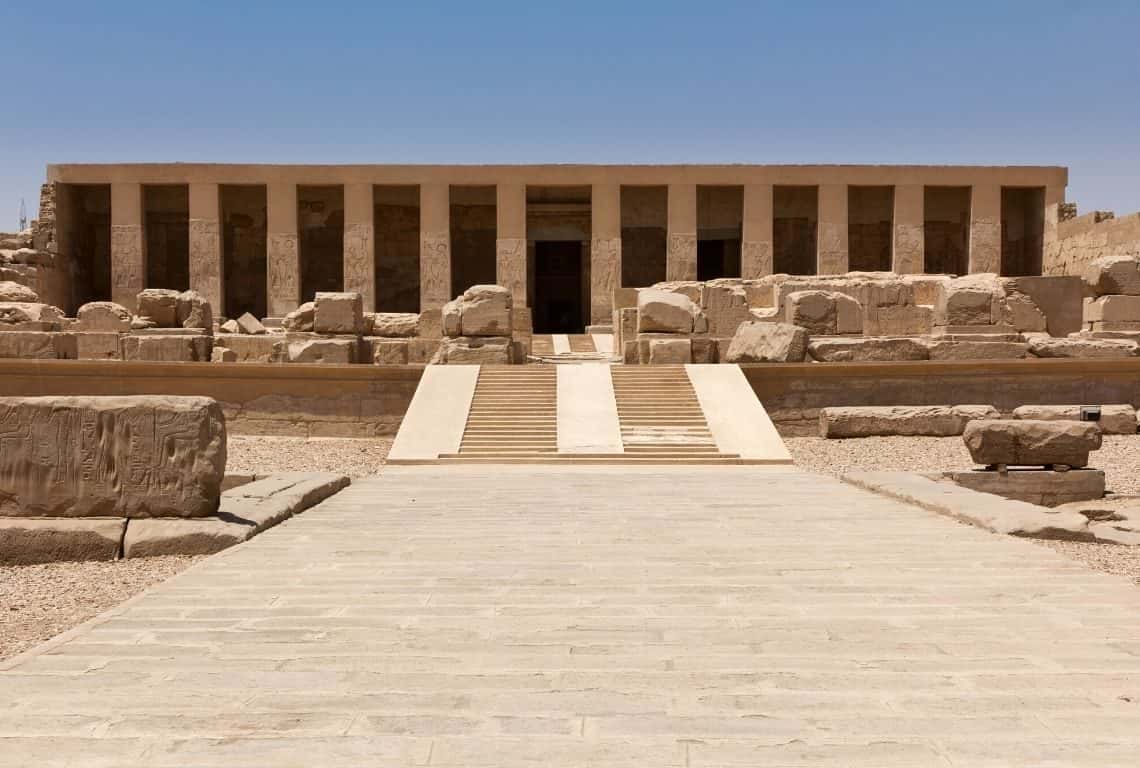
Best Do-It-Yourself Day Trips from Luxor / The Temple of Abydos
The Temple of Abydos boasts awe-inspiring architecture, with intricate reliefs and carvings that narrate ancient myths and rituals. Its design embodies the ancient Egyptians’ deep connection with the cosmos and their understanding of the journey to the afterlife.
One of the temples you should not miss is the Temple of Seti I was built by both Seti I and his son Ramses II. The construction began in about 1300 BC.
Today, you enter the temple through the Courtyard which leads to the First and then the Second Hypostyle Hall.
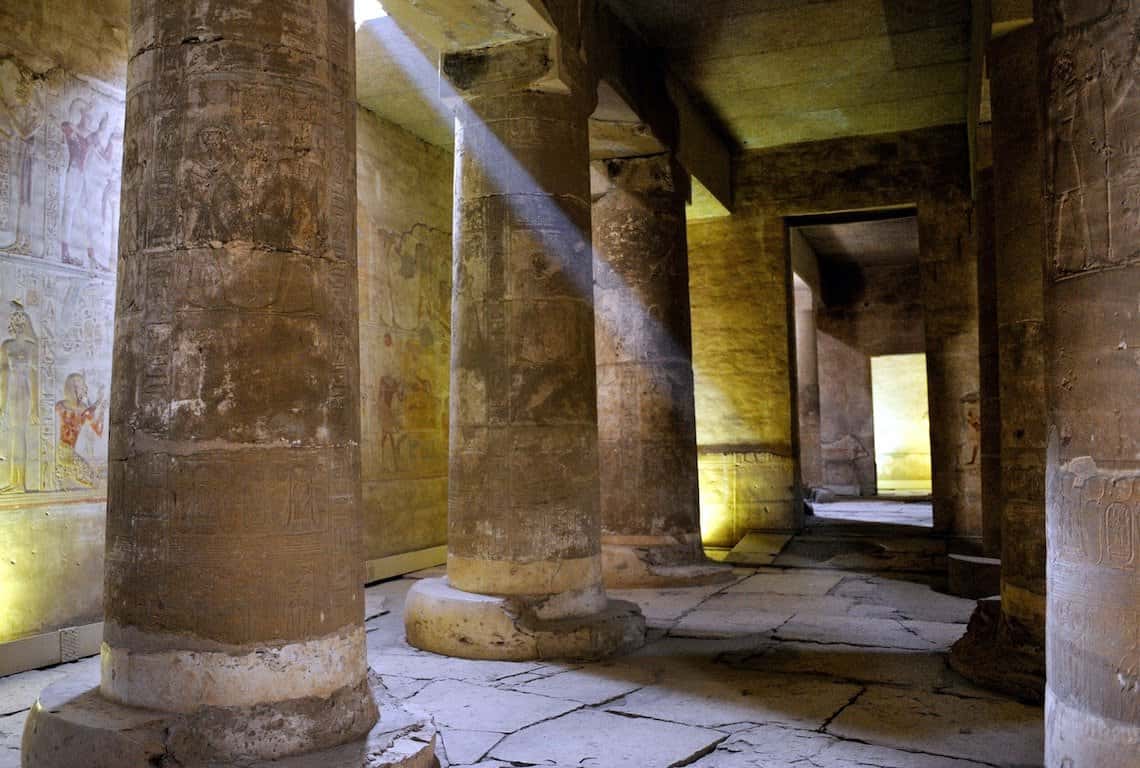
Best Do-It-Yourself Day Trips from Luxor / The Temple of Abydos (Hypostyle Hall)
The Second Hypostyle Hall has some of the most amazing reliefs. They rank among the finest achievements of Egyptian sculpture.
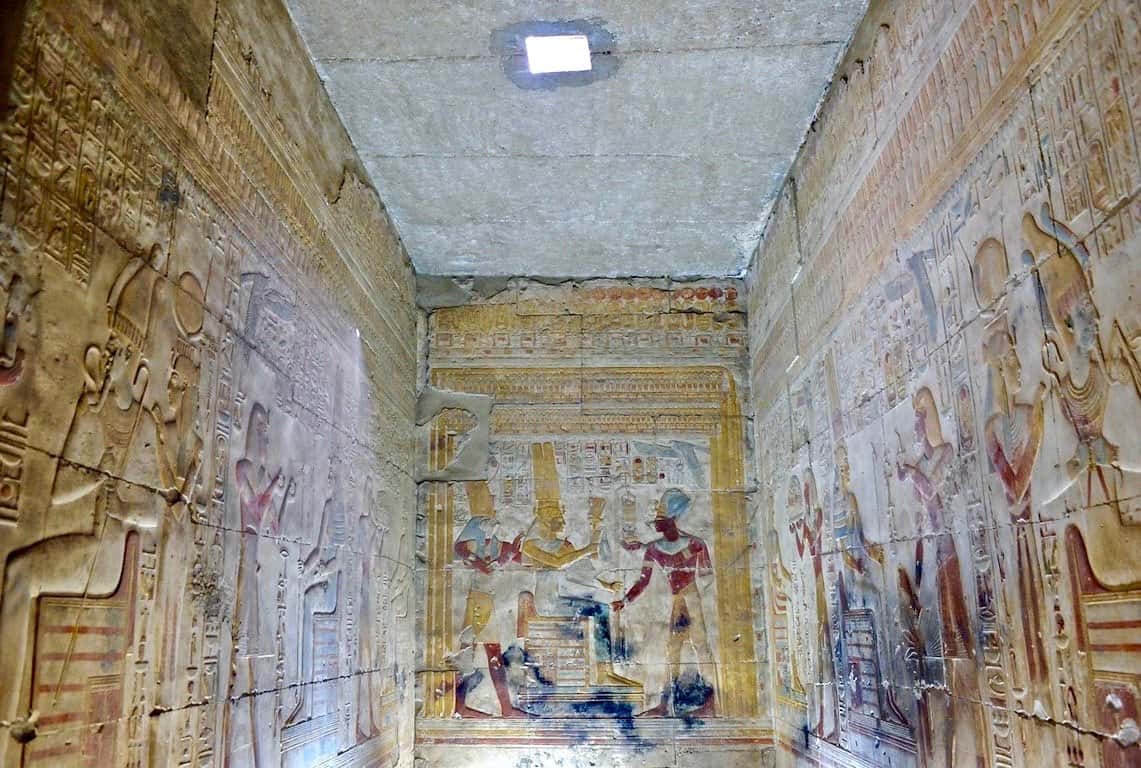
Best Do-It-Yourself Day Trips from Luxor / The Temple of Abydos
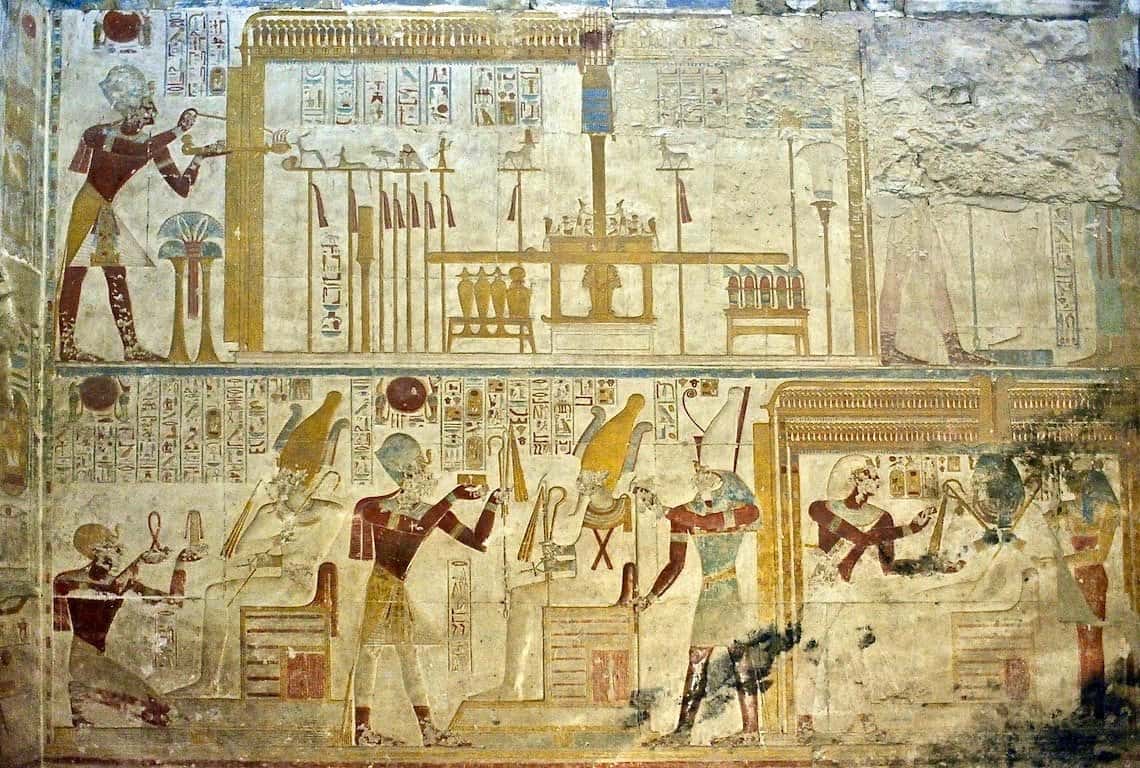
Best Do-It-Yourself Day Trips from Luxor / The Temple of Abydos
One of the most notable features of the temple is the “Table of Abydos,” a series of cartouches that lists the names of ancient Egyptian pharaohs. This fascinating record provides insights into Egypt’s dynastic history and serves as a testament to the temple’s significance over the centuries.
The list contains the names of 76 pharaohs. It begins with the first pharaoh of Egypt, Menes, and continues to Seti I.
The name of my favorite Pharaoh Hatshepsut was omitted. As well as, the name of the Pharaoh Akhenaten.
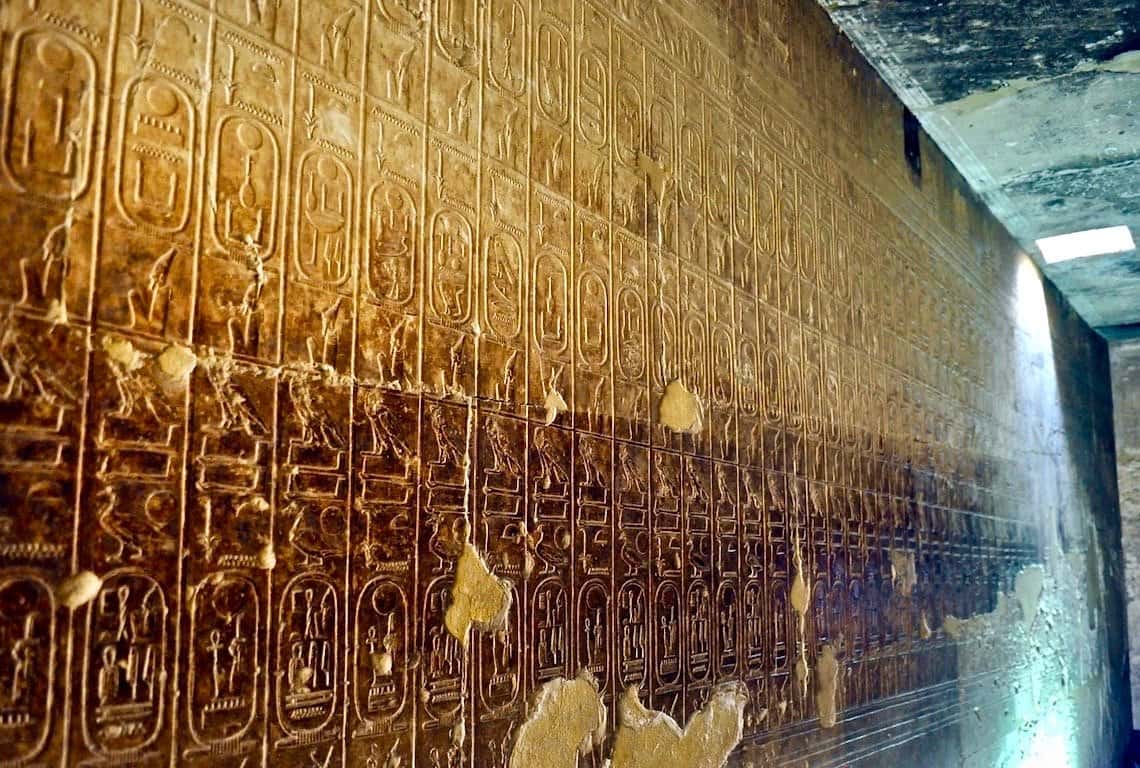
Best Do-It-Yourself Day Trips from Luxor / The Temple of Abydos (Table of Abydos)
Another interesting feature inside the Temple of Seti I are the mysterious hieroglyphs. They do resemble modern-day machines like a yacht, a submarine, a fighter plane, and a helicopter.
Egyptologists and experts in the field of ancient Egyptian studies have extensively studied hieroglyphs and the cultural context in which they were created. The consensus among scholars is that these hieroglyphs are not depictions of modern machines. Rather, they are representations of objects and ideas that held specific significance within the ancient Egyptian worldview.
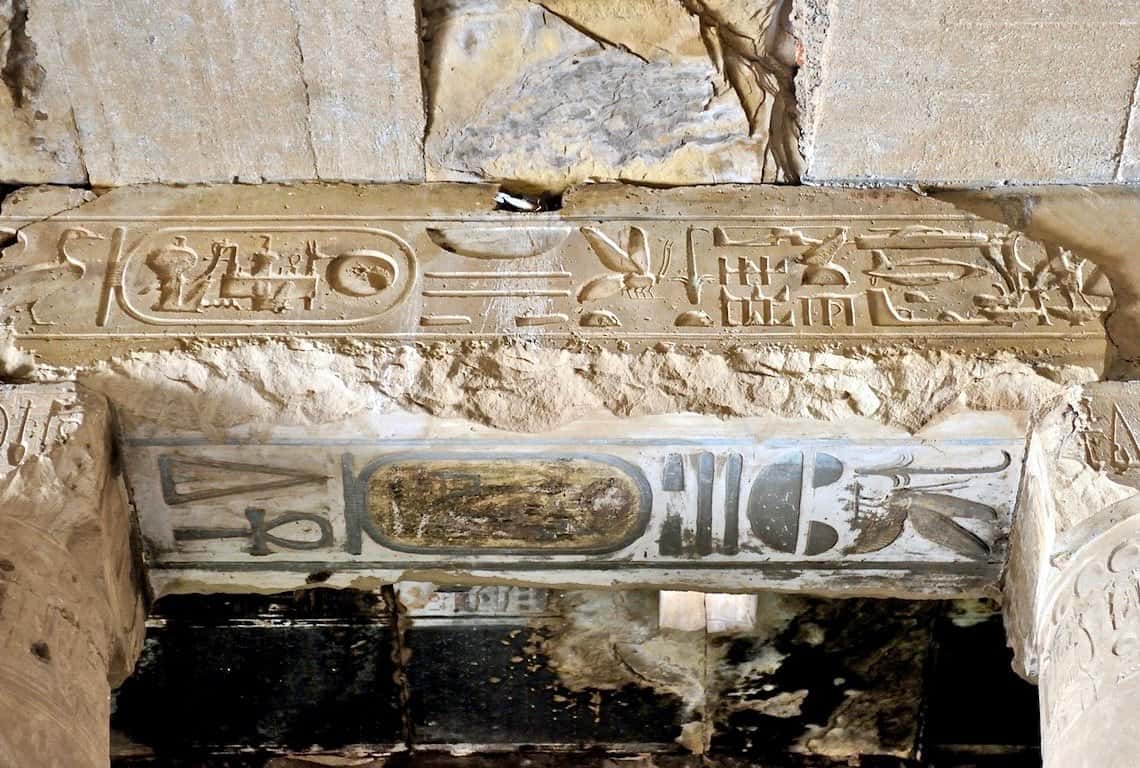
Best Do-It-Yourself Day Trips from Luxor / The Temple of Abydos
To the rear of the Temple of Seti I is an ancient megalithic structure called Osirion. Its original purpose is unknown.
This chamber features massive columns and a unique architectural style that evokes a sense of ancient grandeur.
The Osirion is associated with the Osirian Mysteries, a set of rituals and beliefs centered around the myth of Osiris, his death, and resurrection. The Osirion’s design and symbolism are shrouded in mystery, inviting speculation and contemplation about its purpose and significance.
Abydos was considered a sacred pilgrimage site where Egyptians sought to connect with Osiris and ensure a prosperous journey to the afterlife. Pilgrims would visit the temple to participate in rituals, offer prayers, and seek blessings for their eternal journey. The temple’s location near the final resting place of Osiris added to its allure as a place of spiritual significance.
Intrepid Scout's Tips for Best Do-It-Yourself Day Trips from Luxor
That’s quite a list, right? Now, if you only have time for one day trip from Luxor, where should you go?
I would recommend combining a visit to the Temples of Abydos with a visit to the Temple of Dendera.
- First of all, start your day super early. I am talking about 5 or 6 a.m.
- Next, head directly to the Temples of Adybos. It will take you about 2.5 hours to reach the temple complex. And, about 2-3 hours to explore the temple grounds.
- Once you are done exploring the Temples of Adybos, head directly to the Temple of Dendera. It will take you about 1.5 hours to get to the Temple of Dendera from the Temples of Abydos. Again, plan on spending about 2 hours at the Temple of Dendera.
- Once you are done, head back to Luxor, which should take you about 1.5 hours.
In addition, I want to recommend a couple more trips from Luxor that would require either overnight accommodations or taking a flight instead of driving. The first one is Gebel el-Silsila and another one, which is an absolute must-see place is Abu Simbel.
You Might Also Like
12 Important TIPS for First VISIT to VALLEY of the KINGS in Luxor
12 Important TIPS for Hot AIR BALLOON RIDE in LUXOR, Egypt (Read Before You Book It)
Perfect 2-Day Itinerary in Luxor (7 Things You Can’t Miss)
14 EGYPT TIPS for FIRST TIMERS (How to Save Time, Money, and Be Safe)
How to Visit And What to See at ABU SIMBEL (9 Practical Things to Know)
How to Visit KARNAK TEMPLE in Luxor (9 Amazing Things You Can’t Miss)
Did You Find 5 Best Do-It-Yourself Day Trips from Luxor Useful?
Why Not Save It to Your Pinterest Board!
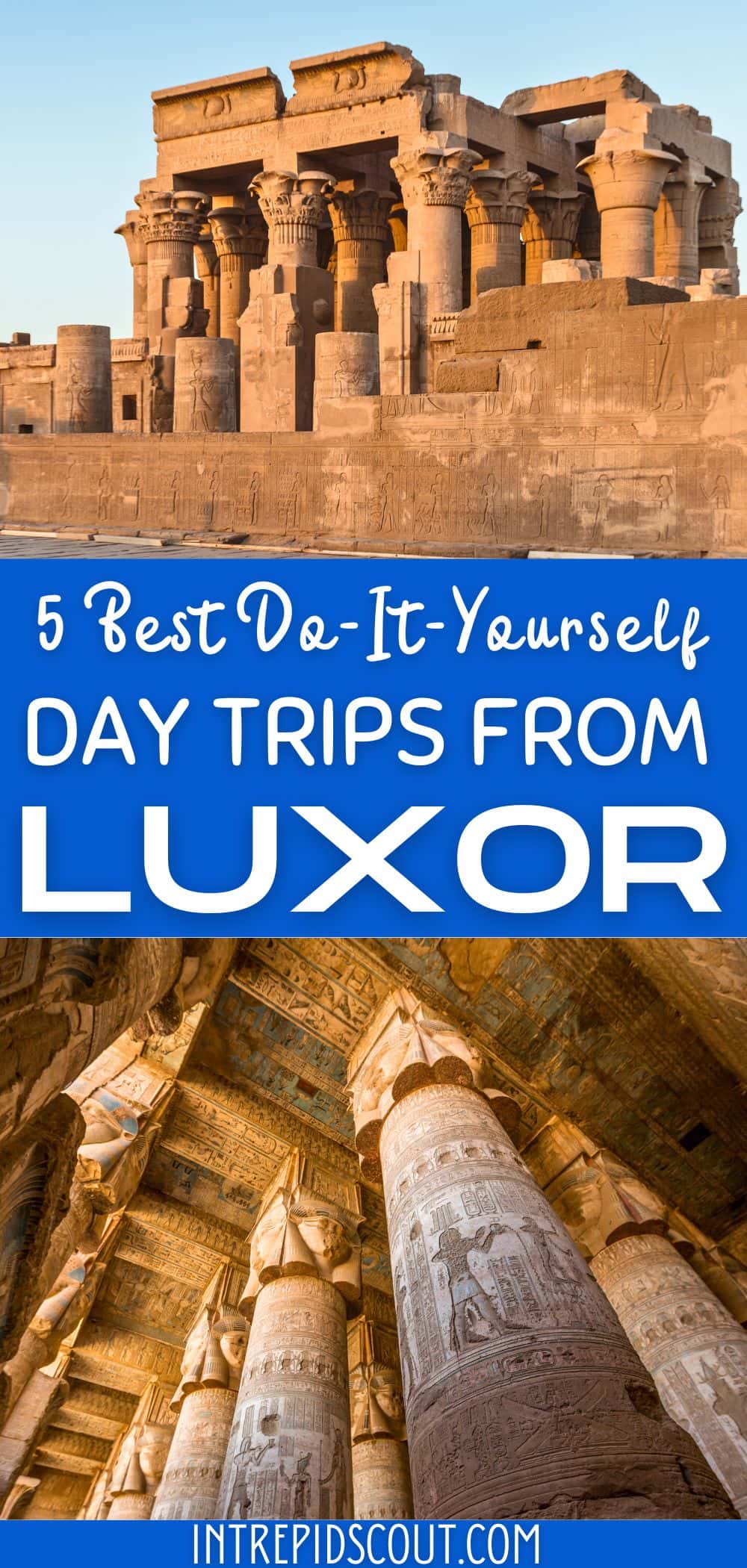
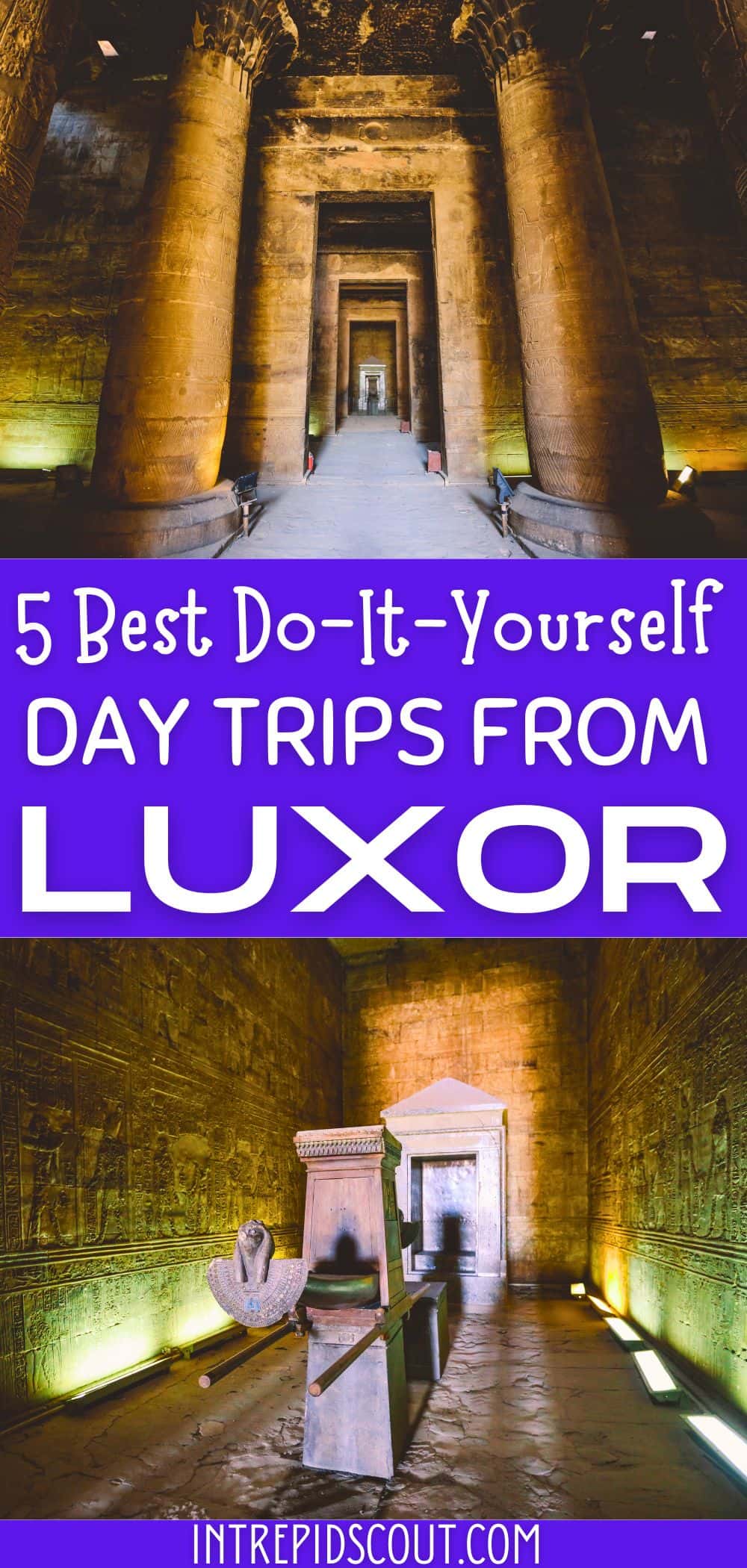
Now, It Is Your Turn, I Would Like to Hear Back from You!
Are you planning your trip to Luxor?
Please let me know! Drop me a quick comment right below!
Click on any of the images below to get inspired and to help you with the planning process for your trip to Egypt!
